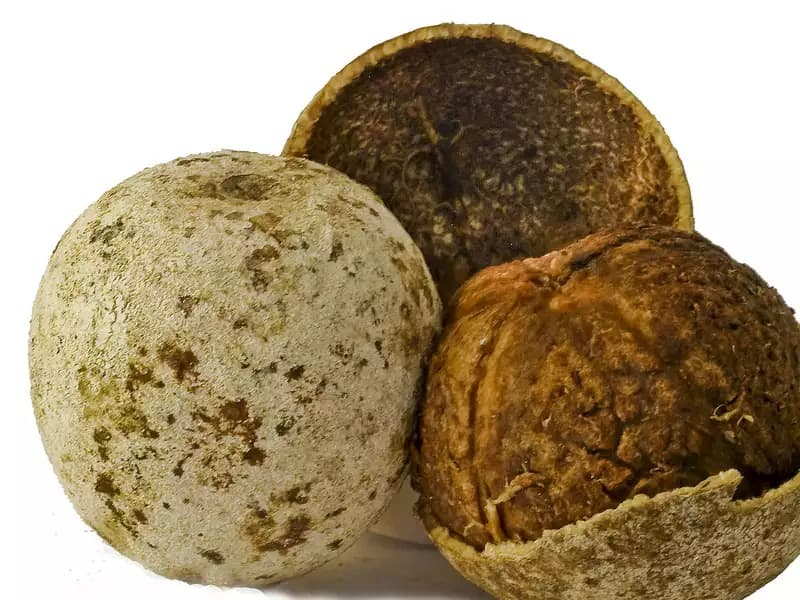Wood Apple

Wood apples, botanically classified as Limonia acidissima, are hard-shelled fruits belonging to the Rutaceae family. There are two varieties of Wood apples; the larger, more common variety and a smaller variety known for its acidic nature, found throughout Asia and Southeast Asia. Wood apples are especially favored in India and Sri Lanka for their unique flavor and purifying properties. It is important to note that Wood apples are sometimes confused with bael fruit and may be called bael in local markets, but the two fruits are different species.
Wood apples have a shell that is tough, woody, white to light brown, and has a rough texture akin to tree bark. They have the appearance of little coconuts and range in size from 5 to 12 cm. Fruit is dropped on the ground from a height of about one foot to determine its ripeness; if the fruit bounces, it is not ripe. When young, the Wood apple's pulp or flesh is ivory-colored; as it ages, it turns orange-brown or dark brown. The flesh is sticky, mealy, and creamy when the rind is cracked open. White, crunchy, eatable seeds as well as the rare fibrous string can be found inside the meat. A unique blend of sweet, sour, and acidic flavors that are evocative of tamarind, eggnog, raisins, and strong cheeses may be found in wood apples.










